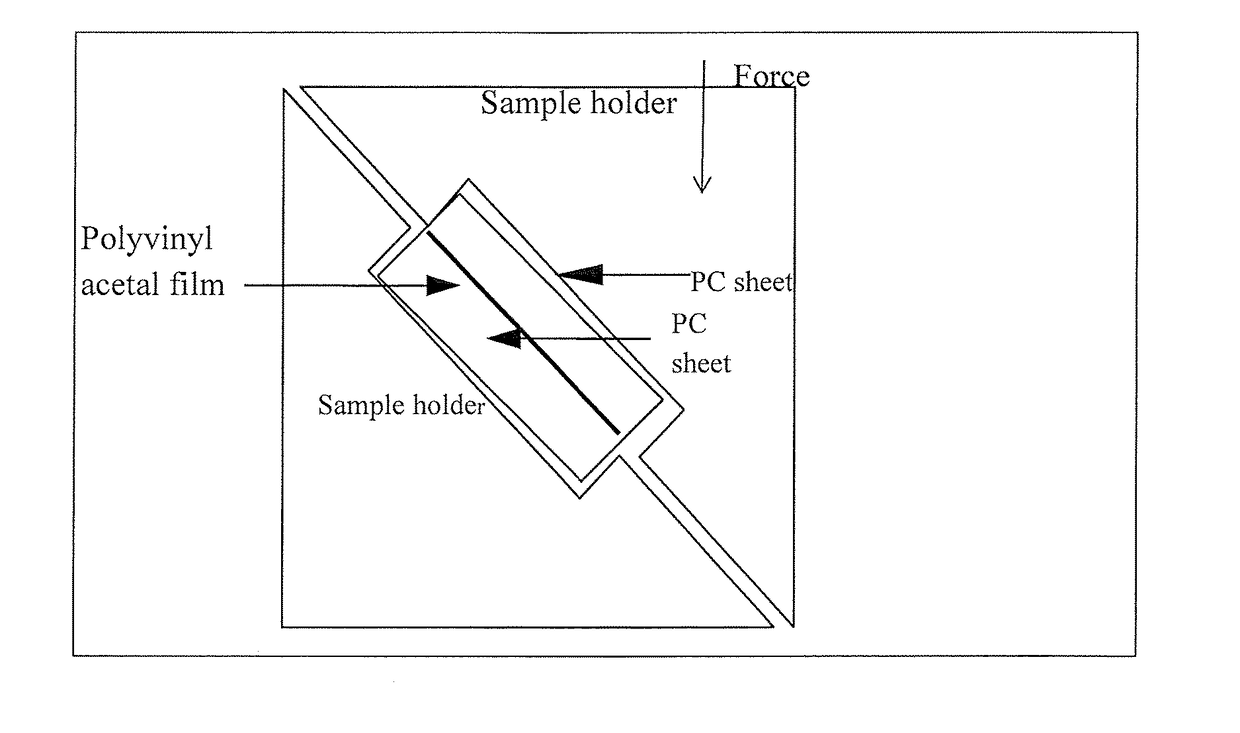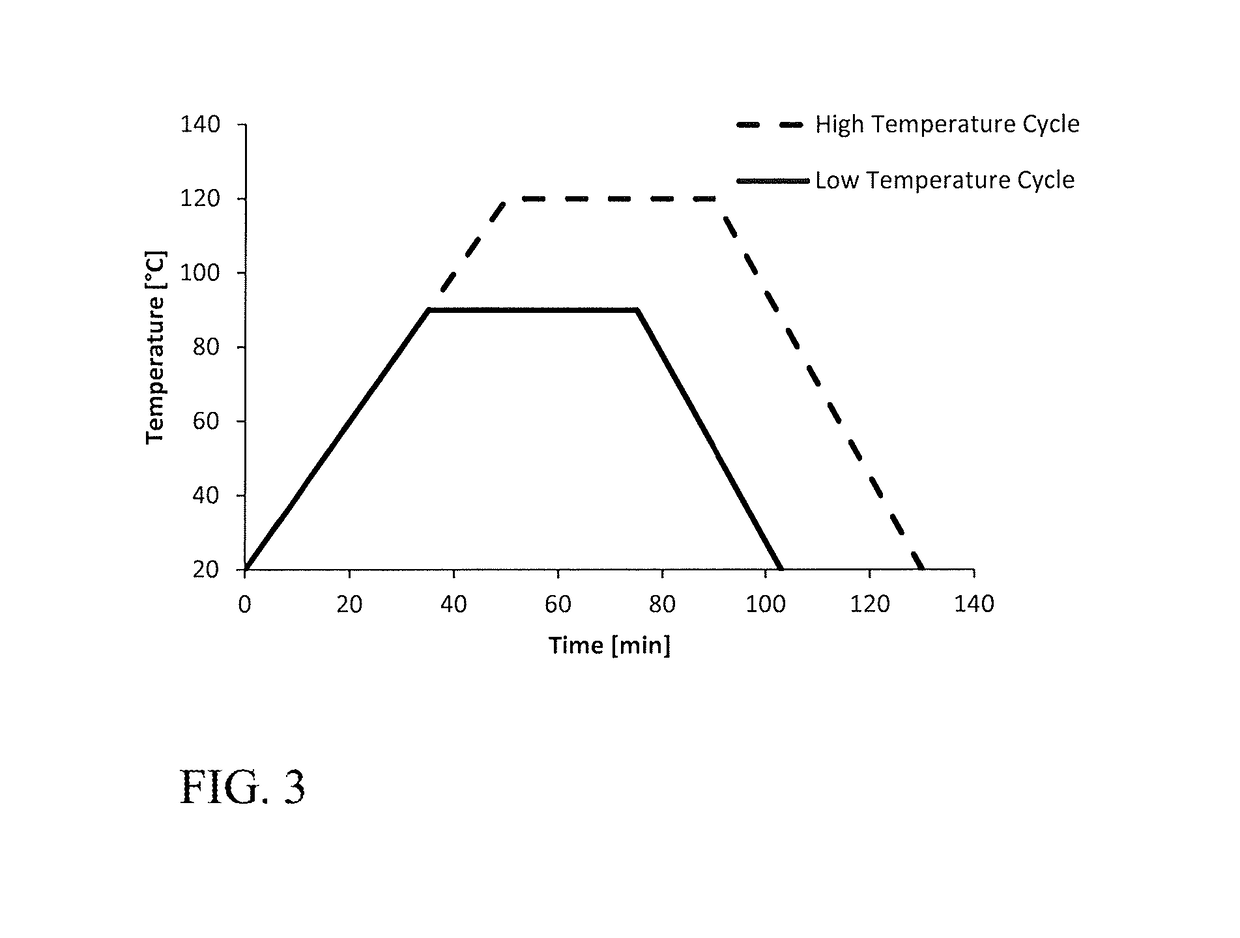Use of plasticizer-free polyvinylacetal for laminating sheets of polycarbonate
a technology of polyvinylacetal and polycarbonate, which is applied in the direction of transportation and packaging, other domestic articles, synthetic resin layered products, etc., can solve the problems of reducing the weight of laminated glass, affecting the mechanical stability and optical properties of polycarbonate sheets, and limited application of polycarbonate layers as a replacement for mineral glass
- Summary
- Abstract
- Description
- Claims
- Application Information
AI Technical Summary
Benefits of technology
Problems solved by technology
Method used
Image
Examples
examples
[0021]Thin films of PVB with a composition as follows were laminated between two sheets of polycarbonate (PC).
[0022]PVB 1: PVOH content: 18.5 wt. %, PVOAc content: 2.0 wt. %, viscosity: 83.5 mPas
[0023]PVB 2: PVOH content: 18.6 wt. %, PVOAc content: 1.8 wt. %, viscosity: 201.0 mPas
[0024]PVB 3: PVOH content: 18.8 wt. %, PVOAc content: 15.5 wt. %, viscosity: 129.3 mPas
[0025]In order to compare the features of the laminate according to the invention all laminates were processed in the same way and all PVB films have a thickness of about 75 μm. Conditions for lamination were adopted from standard materials for PC lamination, like TPU (thermoplastic polyurethane) or EVA (ethylene co vinyl acetate). Therefore, lamination temperature was set to 90° C. to avoid softening of the polycarbonate, and pressure was set not to exceed 10 bar to prevent substrate distortion.
[0026]Test specimens of PVB laminates 2.5×2.5 cm in size were evaluated in terms of adhesion properties using compressive shear ...
PUM
| Property | Measurement | Unit |
|---|---|---|
| temperatures | aaaaa | aaaaa |
| thickness | aaaaa | aaaaa |
| thickness | aaaaa | aaaaa |
Abstract
Description
Claims
Application Information
 Login to View More
Login to View More - R&D
- Intellectual Property
- Life Sciences
- Materials
- Tech Scout
- Unparalleled Data Quality
- Higher Quality Content
- 60% Fewer Hallucinations
Browse by: Latest US Patents, China's latest patents, Technical Efficacy Thesaurus, Application Domain, Technology Topic, Popular Technical Reports.
© 2025 PatSnap. All rights reserved.Legal|Privacy policy|Modern Slavery Act Transparency Statement|Sitemap|About US| Contact US: help@patsnap.com



